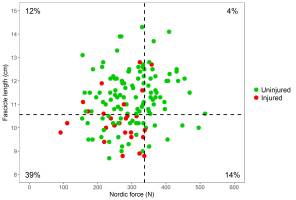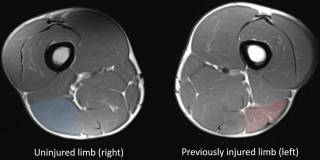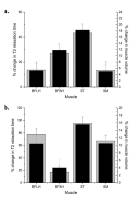An evidence-based framework for strengthening exercises to prevent hamstring injury
Journal article
Bourne, Matthew N., Timmins, Ryan Gregory, Opar, David, Pizzari, Tania, Ruddy, Joshua D., Sims, Casey, Williams, Morgan D. and Shield, Anthony J.. (2018). An evidence-based framework for strengthening exercises to prevent hamstring injury. Sports Medicine. 48(2), pp. 251 - 267. https://doi.org/10.1007/s40279-017-0796-x
| Authors | Bourne, Matthew N., Timmins, Ryan Gregory, Opar, David, Pizzari, Tania, Ruddy, Joshua D., Sims, Casey, Williams, Morgan D. and Shield, Anthony J. |
|---|---|
| Abstract | Strength training is a valuable component of hamstring strain injury prevention programmes. However, in recent years a significant body of work has emerged to suggest that the acute responses and chronic adaptations to training with different exercises are heterogeneous. Unfortunately, these research findings do not appear to have uniformly influenced clinical guidelines for exercise selection in hamstring injury prevention or rehabilitation programmes. The purpose of this review is to provide the practitioner with an evidence-base from which to prescribe strengthening exercises to mitigate the risk of hamstring injury. Several studies have established that eccentric knee flexor conditioning reduces the risk of hamstring strain when compliance is adequate. The benefits of this type of training are likely to be at least partly mediated by increases in biceps femoris long head fascicle length and improvements in eccentric knee flexor strength. Therefore, selecting exercises with a proven benefit on these variables should form the basis of effective injury prevention protocols. In addition, a growing body of work suggests that the patterns of hamstring muscle activation diverge significantly between different exercises. Typically, relatively higher levels of biceps femoris long head and semimembranosus activity have been observed during hip-extension oriented movements whereas preferential semitendinosus and biceps femoris short head activation have been reported during knee-flexion oriented movements. These findings may have implications for targeting specific muscles in injury prevention programmes. An evidence-based approach to strength training for the prevention of hamstring strain injury should consider the impact of exercise selection on muscle activation, and the effect of training interventions on hamstring muscle architecture, morphology and function. Most importantly, practitioners should consider the effect of a strength training programme on known or proposed risk factors for hamstring injury. |
| Year | 2018 |
| Journal | Sports Medicine |
| Journal citation | 48 (2), pp. 251 - 267 |
| Publisher | Springer |
| ISSN | 0112-1642 |
| Digital Object Identifier (DOI) | https://doi.org/10.1007/s40279-017-0796-x |
| Scopus EID | 2-s2.0-85033365443 |
| Open access | Published as green open access |
| Page range | 251 - 267 |
| Research Group | Sports Performance, Recovery, Injury and New Technologies (SPRINT) Research Centre |
| Author's accepted manuscript | License All rights reserved File Access Level Open |
| Publisher's version | License All rights reserved File Access Level Controlled |
| Supplemental file | License All rights reserved File Access Level Open |
| Supplemental file | License All rights reserved File Access Level Open |
| Supplemental file | License All rights reserved File Access Level Open |
| Supplemental file | License All rights reserved File Access Level Open |
| Supplemental file | License All rights reserved File Access Level Open |
| Place of publication | United States of America |
https://acuresearchbank.acu.edu.au/item/8q786/an-evidence-based-framework-for-strengthening-exercises-to-prevent-hamstring-injury
Download files
Author's accepted manuscript
| AM_Bourne_2018_An_evidence_based_framework_for_strengthening.pdf | |
| License: All rights reserved | |
| File access level: Open | |
Supplemental file
| 0-Bourne_Figure_1_updated.jpg | |
| License: All rights reserved | |
| File access level: Open | |
| 1-Figure_2_A_League_scatter_plot.jpeg | |
| License: All rights reserved | |
| File access level: Open | |
| 2-Figure_3_Training_induced_changes_in_FL_and_strength.jpeg | |
| License: All rights reserved | |
| File access level: Open | |
| 3-Figure_4_atrophy_post_HSI.jpg | |
| License: All rights reserved | |
| File access level: Open | |
| 4-Figure_5_T2_vs_hypertrophy.jpg | |
| License: All rights reserved | |
| File access level: Open | |
Restricted files
Publisher's version
1698
total views7782
total downloads10
views this month22
downloads this month




